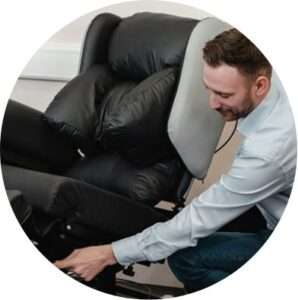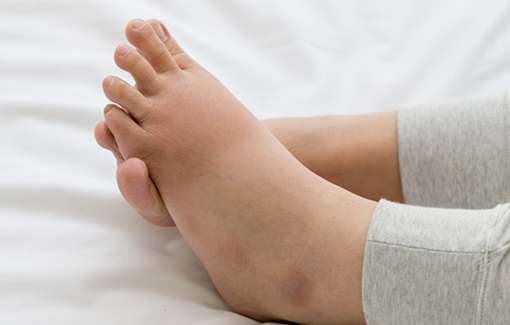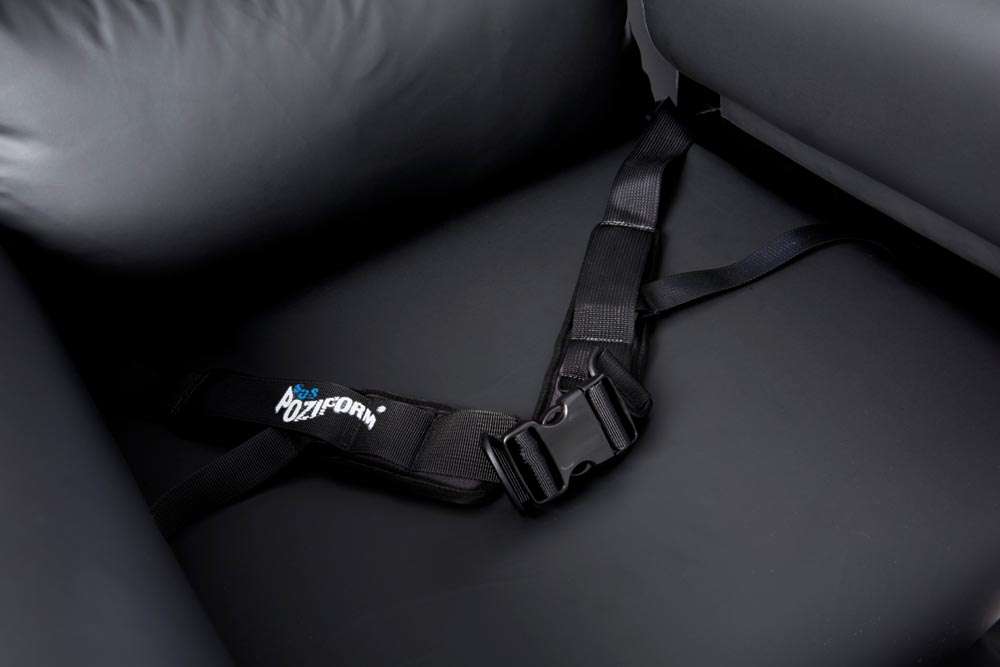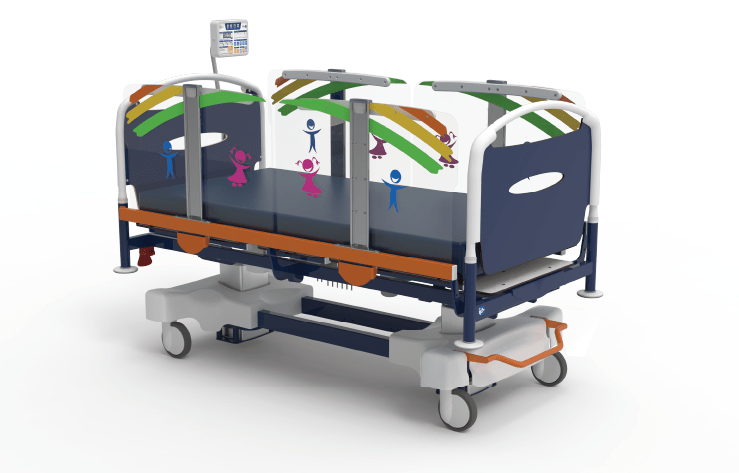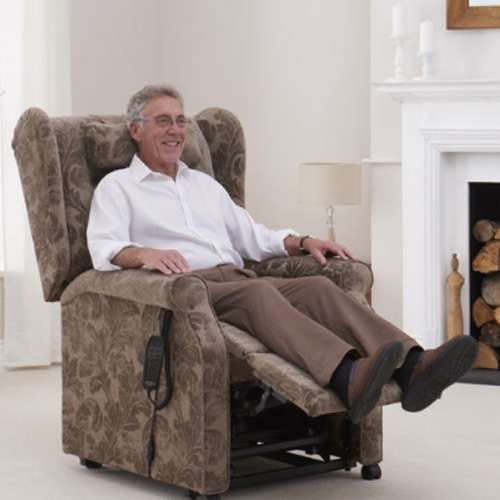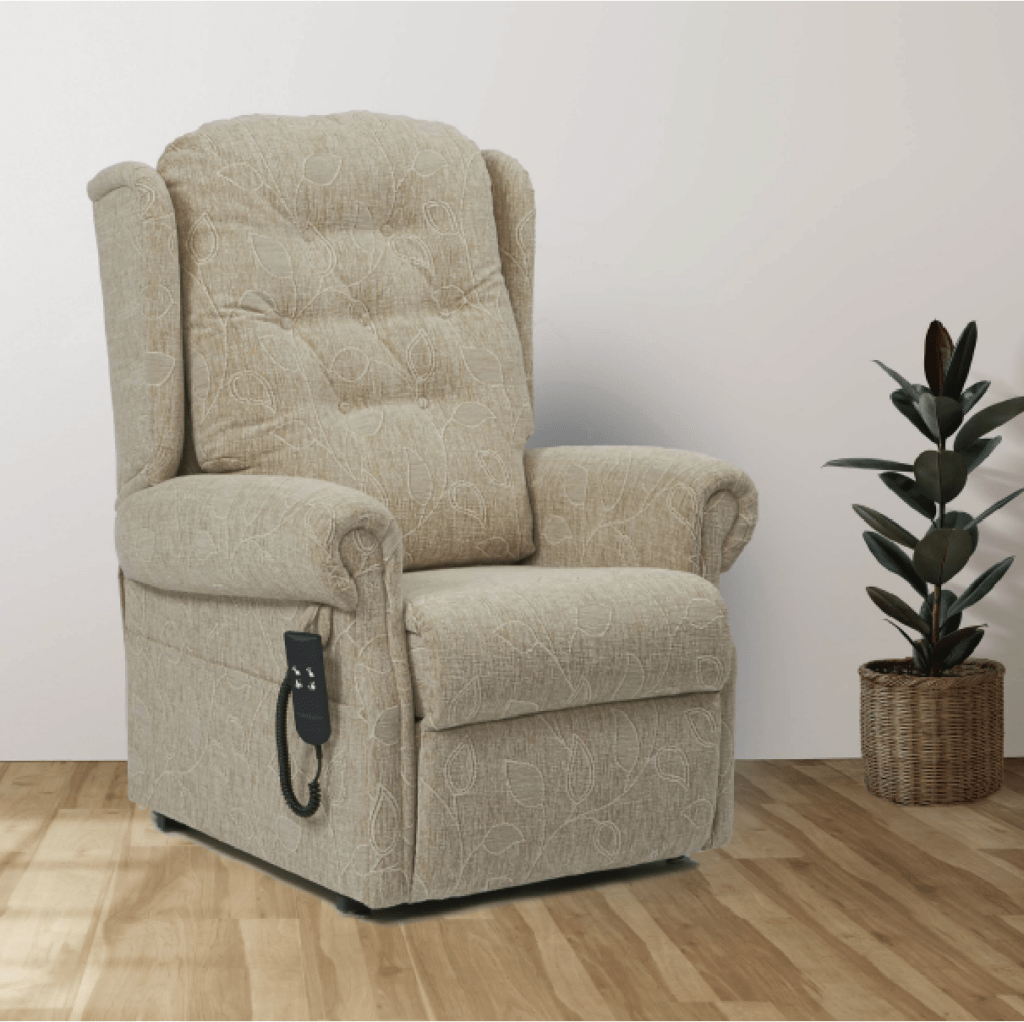In this blog post, we’ll take an in-depth look at the features to keep and eye out when specifying or buying a medical chair for someone with kyphosis.
We will ask what is kyphosis and what are specific angles of a person’s spine that determine a kyphotic spinal curvature, the importance of pelvic positioning?
What are the potential benefits of a breathable chair fabric, and what role does pressure ulcer/sore management plat in finding the right supportive medical chairs for someone with a kyphotic spine.
Whether you’re a healthcare professional or someone looking to support a loved one with kyphosis, this post will provide valuable insights into finding the best medical seating solutions for their unique needs.
So let’s take a look at what the best medical seating for Kyphosis should include, and why.
Defining Kyphosis
Kyphosis is a condition in which the spine has an excessive frontward curvature, resulting in a rounded or hunched appearance of the upper back.
This spinal condition can range from mild to severe and may affect individuals of any age. There are different types of kyphosis, including postural, Scheuermann’s, and congenital kyphosis.
The degree of curvature that determines a kyphotic spinal curvature varies depending on the type of kyphosis.
- In postural kyphosis, the curvature is usually less than 50 degrees.
- In Scheuermann’s kyphosis, the curvature is typically greater than 50 degrees.
- In congenital kyphosis, the curvature is present at birth.
An increased frontward curvature in the thoracic spine may mean that from the side-on, someone with kyphosis may appear to be significantly hunched or even C-shaped in posture. You can read more on kyphosis here.
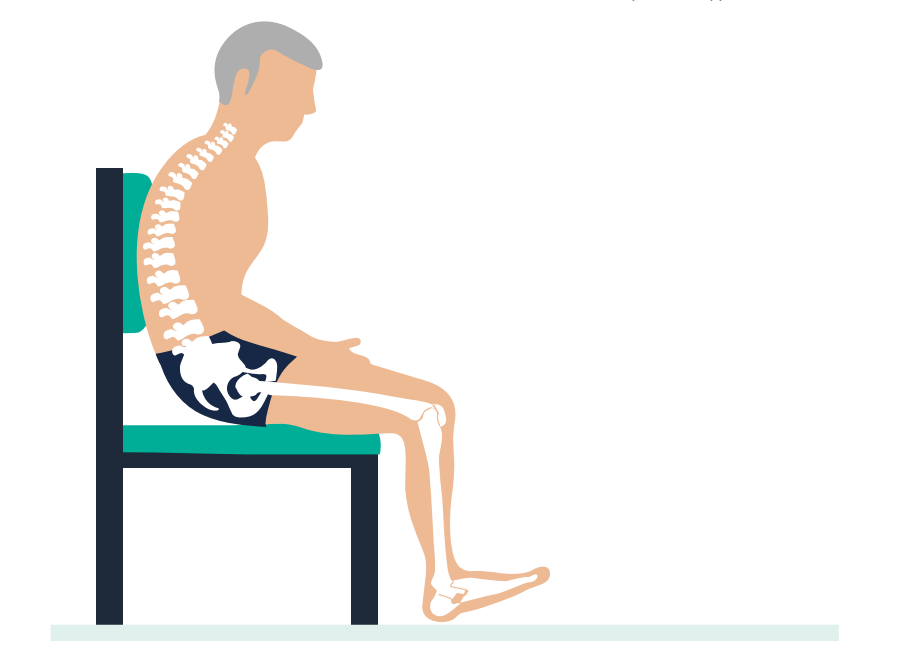
People with Kyphosis will often look hunched over and have a rounded upper back. They also tend to slide their pelvis down the chair to compensate for this.
Causes:
Kyphosis can also be caused by conditions that weaken bones such as osteoporosis or postural issues like posterior pelvic tilt. It can also cause back pain, nerve problems and numbness, problems with breathing, and even pressure ulcers on areas of the spine that are in contact with the backrest of your chair.
Pressure Injury Management:
When it comes to medical chairs for kyphosis management, it’s important to consider factors such as the chair fabric’s vapor permeability. A person with kyphosis may be more prone to sweating and skin irritation resulting from their condition, so choosing a medical chair with a breathable fabric that allows for air circulation and moisture-wicking can help reduce discomfort and skin problems.
Pelvic Positioning & Kyphosis
Pelvic positioning is also crucial when it comes to providing proper seating support for individuals with kyphosis. The Ischial Tuberosities, Anterior Superior Iliac Spine (ASIS), and Posterior Superior Iliac Spine (PSIS) are bony prominences that should be considered when positioning the pelvis in a chair. Proper alignment of the pelvis can help reduce pressure points and provide better support for the spine.
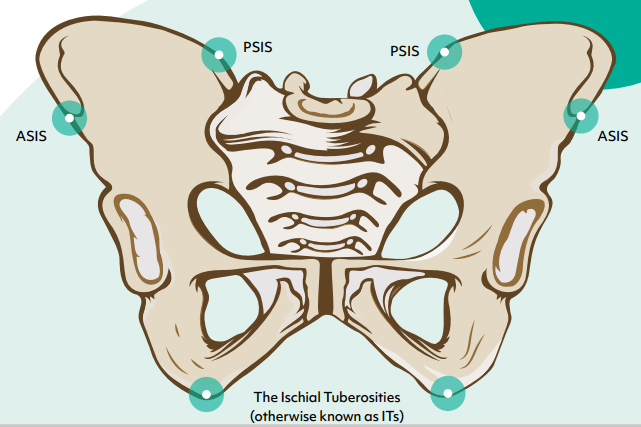
In a kyphotic spine, proper alignment can be more challenging to achieve. A level ASIS and PSIS with minimal anterior tilt is ideal for optimal posture and support. The benefits of proper alignment and support include reducing pain and discomfort, improving breathing function, and promoting overall health and wellbeing.
With posterior pelvic tilt, it’s as though you have slouched and moved your lower back away from the backrest itself. This is a prominent problem for people with Kyphosis because they might be tempted to slouch down in the seat.
For the best pelvic positioning, you want the hips to be towards the back of the chair to be getting the best support possible. This will help to alleviate any pressure on the lower back.
If looking for a medical chair for a person that is still standing and able to move about independently (ambulate), then the Lento Mobile Medical Recliner is a homely and supportive option as you can opt for a lateral waterfall backrest for the most comfort.
Tilt-in-Space for Kyphosis
Positioning the pelvis further back is all well and good, but it won’t do your upper back any favours unless you open up the back angle of the chair. Whether it’s a riser recliner or a care chair, you need to consider the back angle to sit most comfortably.
We usually recommend including tilt-in-space in chairs for people with Kyphosis. This gives you the ability to tilt the seat back without changing the knee or hip angle.
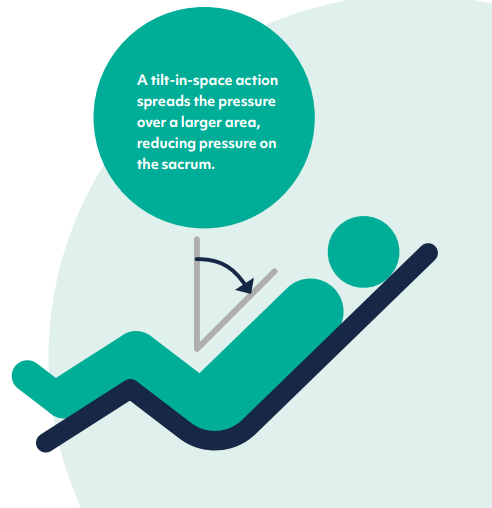
This will then let you lean back and take some of the pressure off your spine. You can also see more of what’s around you without craning your neck!
Tilt-in-space gives you the opportunity for more social interactions, but by maintaining the hip angle, it also keeps you in a sturdy position over time. With a typical recline function or an adjustable backrest, it’s still easy to slide down the chair and slouch.
By choosing tilt-in-space, this keeps your pelvis in the right position and takes away any additional pressure on your upper back or wherever the curve is.
Our seating assessors would recommend the Lento care chair for its flexible positioning. This is ideally for people who are hoisted.
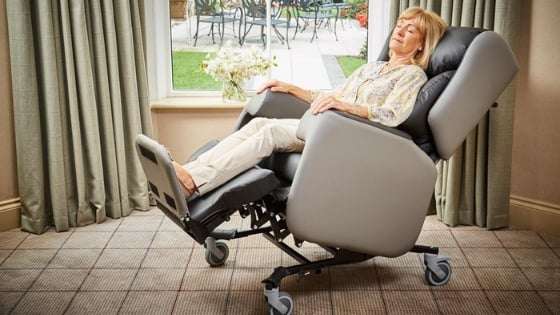
The Lento has tilt-in-space which will help your back to straighten out and take the strain off of your neck and head.
Head Positioning with Kyphosis
The next step to think about is the position of your head. For people with severe Kyphosis, it’s a lot more difficult to support your head because you are always hunched forwards. And the head is a heavy part of the body, so it needs to have some support when you are sat down.
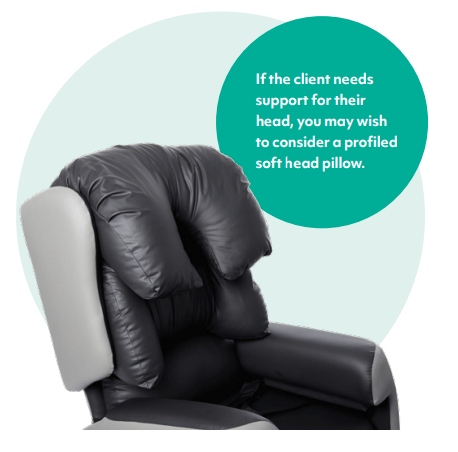
Ideally, a care chair with lateral supports and a waterfall backrest will be the best. This will provide comfort and support behind and on either side of your head.
What Type of Medical Chair is Best for Kyphosis?
Tilt-in-space medical chairs with orthopaedically supportive lateral cushions and an ergonomic backrest to maintain a patient’s midline posture. Correct spinal alignment is key when it comes to adaptive medical seating for managing spinal conditions.
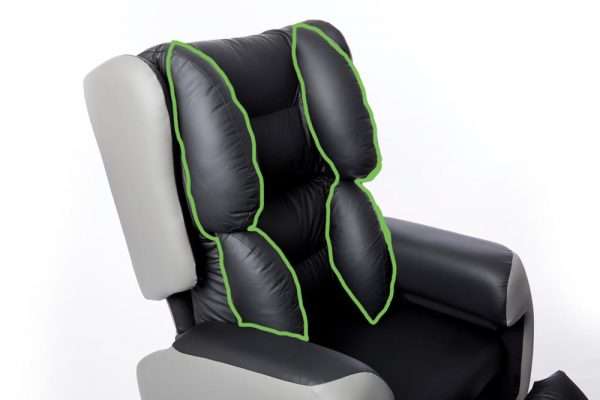
Orthopaedic lateral supports help patients with kyphosis and other spinal conditions to maintain a correct midline posture.
Tilt in Space chairs, orthopaedic chairs are ideal for managing kyphosis & other spinal conditions) because they allow this the seated person to lean back and remove pressure away from their spine. This also benefits pressure sore/ulcer management by redistricting pressure across a person’s body.
Discover the Lento Care Chair
The Lento medical care chair with large wheels is designed for hoisted patients. The Lento mobile patient recliner is an even more portable medical recliner chair with wheels, designed with a slimer profile for easier manoeuvrability but still features all beneficial features expected in a medical chair.
Medical Chairs for Kyphosis – A Summary
When you’re looking for the best medical seating to manage Kyphosis, you need to make sure every stage of the spine is thought about. From the hips to the head, each area needs to be catered to the get the most support and comfort possible.
Our Standard Riser Recliner Chair on Wheels
But if you need some help choosing the right or specifying the correct features, call our team to book a free no-obligation seating assessment. Take a look at seating for different medical conditions in our free eBook.



